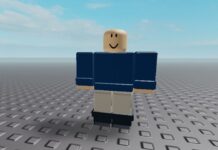Sim racing, a popular virtual experience, has been around for years, captivating motorsport enthusiasts globally. But can it actually train someone for the real-life track? This question has sparked countless debates among drivers, engineers, and gaming enthusiasts alike. The short answer is yes – but it’s more nuanced than it might seem.
Key Points:
- Simulators teach basic track familiarity and layout.
- Realistic sim setups help improve reflexes and reaction time.
- Virtual racing builds muscle memory for steering and pedal control.
- Simulators don’t perfectly capture physical forces and G-forces.
- Racing instinct development is limited in the virtual environment.
- Professional racers use simulators to hone skills off the track.
- Sims provide valuable data analysis practice.
- Mental focus and endurance improve through consistent practice.
- Virtual competitions can build tactical and strategic awareness.
Improved Reflexes and Reaction Time

Simulators offer a powerful tool to sharpen reflexes. Although physical forces aren’t simulated perfectly, the mental and visual demands remain. Racing against the AI or real opponents in the virtual world forces drivers to make split-second decisions.
Adapting to sudden movements, overtakes, or unexpected obstacles can significantly improve response times on a real track.
Many racing platforms, including iRacing, offer structured ways to improve. For those looking to improve in iRacing, it’s worth checking out online courses. They provide detailed guidance to help you reach your goals.
Drivers who consistently use simulators notice faster reflexes in decision-making during their racing sessions. When transitioning to real-world scenarios, those reflexes can help avoid accidents and make cleaner passes on the track.
Familiarity with Tracks and Layouts
Many racing sims feature laser-scanned circuits, which give a precise replication of real-world tracks. Drivers can learn corner entries, braking points, and optimal racing lines. This can help reduce the learning curve when transitioning to real cars. It’s not just about knowing the turns; it’s also about memorizing the layout, visualizing the track ahead, and planning each lap effectively.
Learning these layouts in a sim prepares you for the real-world experience. By reducing the mental load on track day, drivers can focus more on adapting to the car and handling real-world variables like weather and tire wear.
Building Muscle Memory

Steering wheels with force feedback, proper pedal placement, and realistic cockpits all contribute to a training environment where virtual drivers refine their control.
Learning to apply smooth throttle inputs and balancing the car under braking are fundamental skills that carry over to real-world driving. Over time, this type of practice can make precise vehicle control second nature.
If you’re looking to get better at sim racing, online training programs can provide structured guidance.
Physical Forces Aren’t the Same
When driving a real car, G-forces pull the body through corners and under braking. Tires generate grip, and the car communicates its balance to the driver through subtle cues. Even the best home simulator doesn’t convey the full sensation of speed, tire slip, or the sheer intensity of high-speed corners.
Virtual drivers don’t feel these forces, so the physical aspect of car control remains undeveloped. That said, sims can still train the mental processes involved, such as managing tire temperatures, monitoring fuel levels, and understanding car setup changes.
Limits of Instinct Development
Developing instinct behind the wheel is crucial in real racing. The ability to sense how the car behaves under stress or in unpredictable situations is what separates good drivers from great ones.
In real cars, drivers constantly gather information through the seat, steering wheel, and pedals. This feedback loop builds instinctive reactions over time.
Simulators don’t provide the same depth of feedback. Sim drivers may develop a sharp understanding of the track and controls, but real-world instincts develop much slower without the tactile feedback of real racing.
Why Professional Racers Use Sims

Many professional drivers use simulators as part of their training regimen. They use them to study track data, refine their racing lines, and prepare for upcoming events. Simulators can give drivers a chance to practice between races and maintain their mental edge. It also helps them experiment with setups, allowing for adjustments before committing to changes on race day.
Simulators help with more than just driving. They can also give real-time data analysis experience, allowing drivers to review lap times, throttle inputs, and tire management. This process builds a data-driven approach that carries over to real-world scenarios.
Data Analysis: A Transferable Skill
Modern racing is as much about data analysis as it is about raw driving talent. Every lap produces valuable data. In both the virtual and real world, drivers and engineers analyze telemetry to optimize their performance. Simulators allow drivers to develop this skill by reviewing lap data, identifying areas for improvement, and adjusting their approach accordingly.
Learning to interpret and act on telemetry from the virtual world will better prepare a driver for the meticulous nature of real racing setups.
Mental Focus and Endurance
Racing isn’t just about physical ability. Drivers need mental stamina to remain focused through long stints on track. Simulators can help drivers build that mental endurance. Long races in virtual competitions require sustained concentration and strategic planning. The constant decision-making under pressure improves the ability to maintain focus in the real world.
The mental toughness gained from sim sessions can translate well when facing the challenges of long races. Just like in real racing, mistakes in a sim result in consequences, which reinforces the need for precision and patience.
Developing Tactical Awareness

Racing is not only about going fast. It involves outsmarting opponents, knowing when to push and when to defend, and making calculated decisions. Virtual competitions allow drivers to practice these tactical decisions in a safe environment. Drivers can experiment with different strategies, test overtaking moves, and practice defending their position.
Sim racing also involves understanding racecraft—managing gaps, choosing when to pit, and conserving tires. This experience builds tactical awareness, helping real-world drivers better navigate competition on track.
Limitations of Sim Racing
Simulators offer significant advantages for drivers, but they are not a complete replacement for real-world experience. Physical sensations, car-to-car contact, and weather conditions are difficult to simulate perfectly. While sims can prepare you mentally and build important skills, they don’t replicate the full experience of a race car on track.
The lack of real consequences in sim sessions also limits the development of risk management skills. Virtual drivers can push beyond limits without real-world repercussions, which may lead to unrealistic risk-taking behavior.
Final Thoughts
Sim racing offers a valuable tool for those looking to sharpen their skills, familiarize themselves with tracks, and improve their mental focus. However, it’s not a substitute for real-world seat time.
Simulators provide an excellent environment to practice muscle memory, reflexes, and strategic thinking, but they don’t capture the full physical experience. For those serious about racing, simulators serve as a supplement to real-world practice, not a replacement.
Many professional drivers incorporate sims into their training, using them to refine their skills off the track. With the right approach, simulators can enhance performance and prepare drivers for the challenges of racing. However, true mastery comes from combining virtual training with real-world experience.









